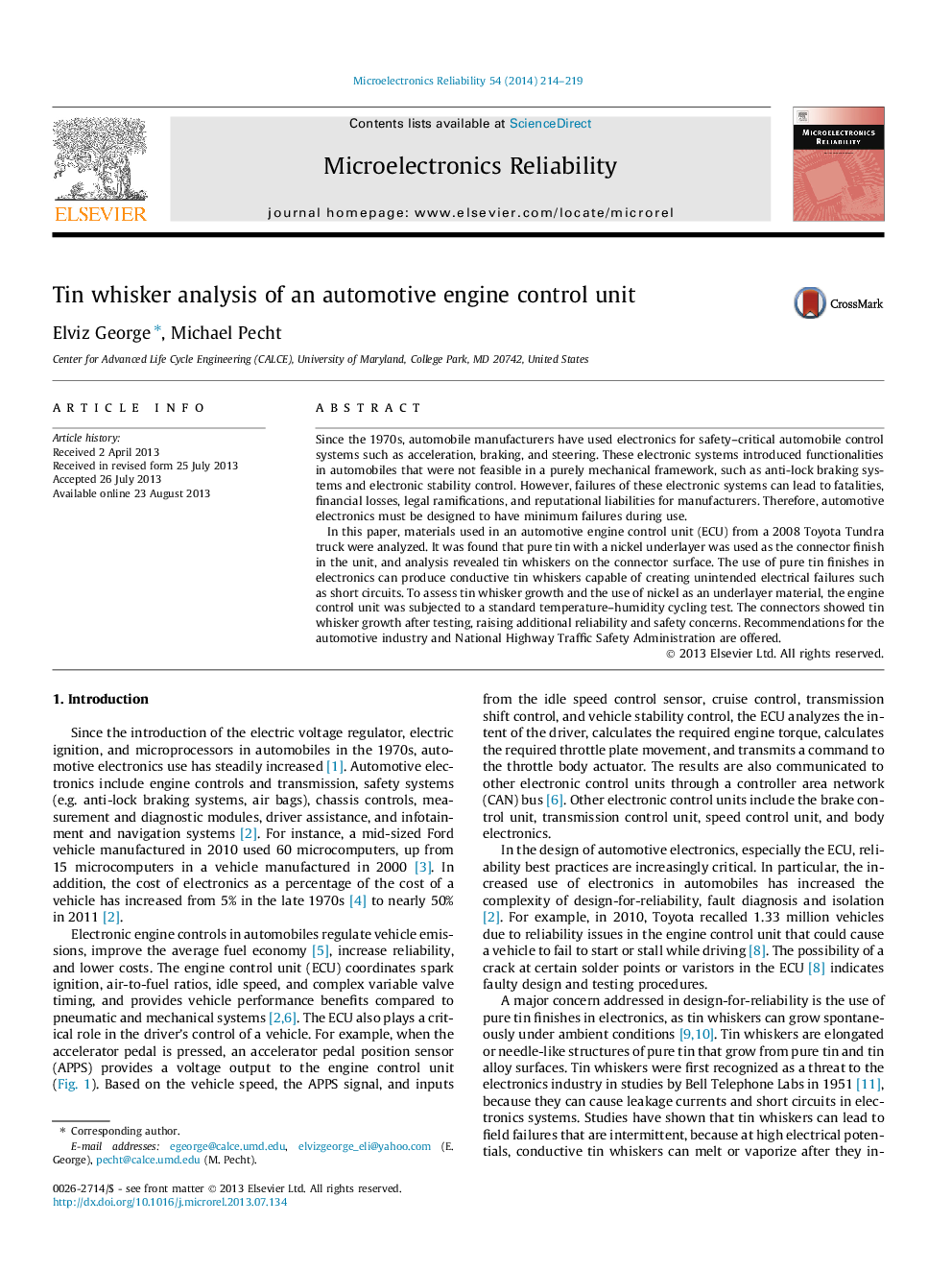| کد مقاله | کد نشریه | سال انتشار | مقاله انگلیسی | نسخه تمام متن |
|---|---|---|---|---|
| 544976 | 871796 | 2014 | 6 صفحه PDF | دانلود رایگان |
• The study showed the presence of tin whiskers on an automotive engine control unit.
• We recommend restrictions on the use of pure tin finishes on automotive applications.
• Tin whiskers are capable of creating unintended electrical failures.
Since the 1970s, automobile manufacturers have used electronics for safety–critical automobile control systems such as acceleration, braking, and steering. These electronic systems introduced functionalities in automobiles that were not feasible in a purely mechanical framework, such as anti-lock braking systems and electronic stability control. However, failures of these electronic systems can lead to fatalities, financial losses, legal ramifications, and reputational liabilities for manufacturers. Therefore, automotive electronics must be designed to have minimum failures during use.In this paper, materials used in an automotive engine control unit (ECU) from a 2008 Toyota Tundra truck were analyzed. It was found that pure tin with a nickel underlayer was used as the connector finish in the unit, and analysis revealed tin whiskers on the connector surface. The use of pure tin finishes in electronics can produce conductive tin whiskers capable of creating unintended electrical failures such as short circuits. To assess tin whisker growth and the use of nickel as an underlayer material, the engine control unit was subjected to a standard temperature–humidity cycling test. The connectors showed tin whisker growth after testing, raising additional reliability and safety concerns. Recommendations for the automotive industry and National Highway Traffic Safety Administration are offered.
Journal: Microelectronics Reliability - Volume 54, Issue 1, January 2014, Pages 214–219
